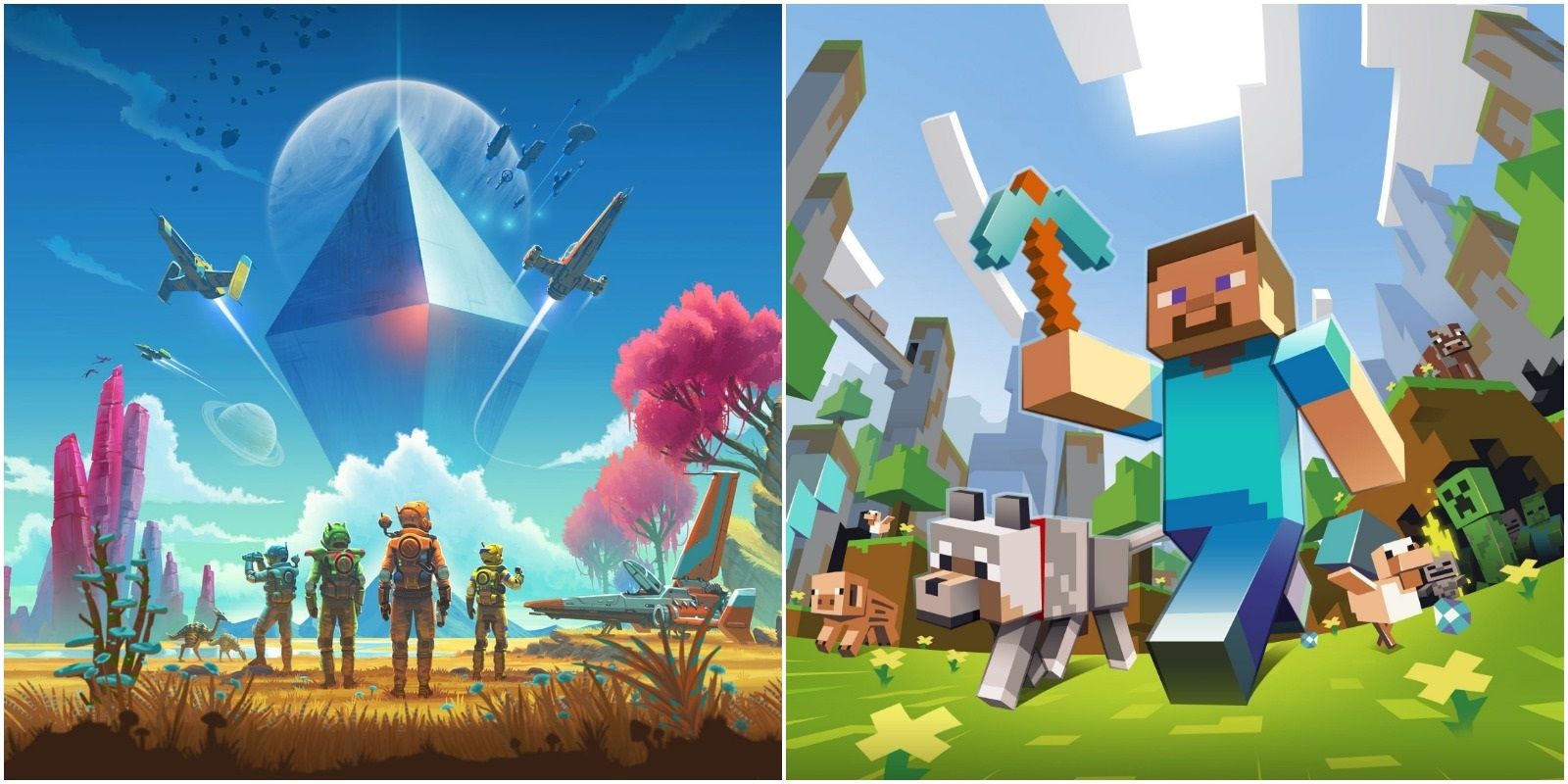The Ever-Expanding World Of Free Online Games: A Comprehensive Exploration
The Ever-Expanding World of Free Online Games: A Comprehensive Exploration
Related Articles: The Ever-Expanding World of Free Online Games: A Comprehensive Exploration
Introduction
With great pleasure, we will explore the intriguing topic related to The Ever-Expanding World of Free Online Games: A Comprehensive Exploration. Let’s weave interesting information and offer fresh perspectives to the readers.
Table of Content
- 1 Related Articles: The Ever-Expanding World of Free Online Games: A Comprehensive Exploration
- 2 Introduction
- 3 The Ever-Expanding World of Free Online Games: A Comprehensive Exploration
- 3.1 A Diverse Landscape of Free-to-Play Experiences
- 3.2 The Free-to-Play Business Model: Monetization Strategies
- 3.3 The Benefits of Free-to-Play Games
- 3.4 The Challenges of Free-to-Play Games
- 3.5 FAQs about Free-to-Play Games
- 3.6 Tips for Playing Free-to-Play Games
- 3.7 Conclusion: A Transformative Force in Gaming
- 4 Closure
The Ever-Expanding World of Free Online Games: A Comprehensive Exploration

The realm of online gaming has undergone a dramatic transformation, with the rise of free-to-play titles becoming a dominant force in the industry. This shift has democratized access to engaging and immersive experiences, allowing players worldwide to enjoy the thrill of virtual worlds without upfront costs. This exploration delves into the intricacies of free-to-play online games, examining their diverse genres, business models, and the profound impact they have on the gaming landscape.
A Diverse Landscape of Free-to-Play Experiences
Free-to-play games encompass a wide spectrum of genres, catering to diverse player preferences. From the fast-paced action of first-person shooters like Fortnite and Call of Duty: Warzone to the strategic depth of massively multiplayer online role-playing games (MMORPGs) such as Destiny 2 and Black Desert Online, the options are seemingly endless.
Multiplayer Online Battle Arenas (MOBAs) like League of Legends and Dota 2 provide competitive team-based combat, while real-time strategy (RTS) titles like StarCraft II and Age of Empires IV offer complex strategic challenges. The realm of card games has also seen a surge in popularity with titles like Hearthstone and Magic: The Gathering Arena captivating players with their unique blend of strategy and luck.
Sandbox games like Minecraft and Roblox empower players to build, create, and explore vast virtual worlds, fostering creativity and collaboration. Even the traditional genres of sports and racing have embraced the free-to-play model with titles like FIFA Online 4 and KartRider Drift offering engaging experiences for competitive and casual players alike.
The Free-to-Play Business Model: Monetization Strategies
The success of free-to-play games hinges on innovative monetization strategies that generate revenue without requiring upfront purchase costs. These models typically employ a combination of techniques:
1. In-Game Purchases: This is the most prevalent monetization strategy, allowing players to acquire cosmetic items, in-game currency, or power-ups using real-world money. These purchases are often optional and do not affect gameplay directly, but can enhance the player experience or provide a competitive edge.
2. Subscription Services: Some free-to-play games offer optional subscription services that grant access to exclusive content, features, or benefits. These subscriptions can include premium items, expanded gameplay options, or accelerated progression.
3. Advertising: Free-to-play games often incorporate non-intrusive advertising, which can be displayed during loading screens, menus, or as in-game banners. This revenue stream helps support the development and maintenance of the game.
4. Microtransactions: Players can purchase small, often recurring, in-game items or services, such as virtual currency, consumables, or character upgrades. These microtransactions are designed to be affordable and encourage regular engagement.
The Benefits of Free-to-Play Games
The emergence of free-to-play games has brought about a paradigm shift in the gaming industry, offering numerous benefits for both players and developers:
1. Increased Accessibility: Free-to-play games eliminate the financial barrier to entry, allowing a wider audience to experience the joys of gaming. This accessibility fosters inclusivity and expands the potential player base, particularly for individuals who may not be able to afford traditional paid games.
2. Reduced Risk for Developers: Free-to-play games allow developers to test new ideas and experiment with different gameplay mechanics without the financial risk associated with traditional paid games. This fosters innovation and allows for the development of niche titles that may not be commercially viable under a traditional model.
3. Continuous Content Updates: Free-to-play games often receive regular content updates, ensuring a consistent flow of new content, events, and features. This continuous development keeps players engaged and incentivizes them to return for more.
4. Enhanced Community Engagement: The free-to-play model encourages a more active and engaged player community. With a larger player base, developers can foster a vibrant online environment through forums, social media, and in-game events, fostering a sense of belonging and shared experience.
5. Data-Driven Development: Free-to-play games leverage data analytics to understand player behavior and preferences, allowing developers to refine gameplay mechanics, balance game economies, and tailor content updates to specific player demographics. This data-driven approach enhances the overall gaming experience and ensures a more targeted approach to development.
The Challenges of Free-to-Play Games
While free-to-play games offer numerous advantages, they also present challenges that require careful consideration:
1. Monetization Practices: The reliance on in-game purchases and microtransactions can lead to concerns about exploitative practices, such as pay-to-win mechanics or predatory pricing. Developers must strike a delicate balance between generating revenue and maintaining a fair and enjoyable gameplay experience.
2. Player Retention: Free-to-play games face the challenge of retaining players in a competitive market. Developers must constantly provide engaging content updates, events, and incentives to keep players coming back.
3. Balancing Gameplay: Free-to-play games often require careful balancing to ensure a fair and enjoyable experience for both free and paying players. Developers must avoid creating a pay-to-win environment, where players who spend money have a significant advantage over those who do not.
4. Community Management: With a large and diverse player base, free-to-play games require effective community management to address player concerns, maintain a positive online environment, and prevent toxicity or harassment.
5. Game Development Costs: Free-to-play games often require significant ongoing investment in development, content updates, and server maintenance. Developers must carefully manage their resources to ensure the game’s long-term viability.
FAQs about Free-to-Play Games
1. Are free-to-play games truly free?
While free-to-play games do not require an upfront purchase, they often generate revenue through in-game purchases, subscriptions, or advertising. However, these monetization strategies are typically optional and do not impede gameplay. Players can enjoy the core game experience without spending any money.
2. Are free-to-play games pay-to-win?
Not all free-to-play games are pay-to-win. Many titles prioritize a balanced gameplay experience, ensuring that players who do not spend money can still compete and progress. However, some games may offer advantages to paying players, which can create an imbalance. It’s essential to research a game’s monetization model before committing to ensure it aligns with your preferences.
3. Are free-to-play games worth playing?
Free-to-play games offer a wide range of high-quality experiences, rivaling their paid counterparts in terms of gameplay, graphics, and content. However, the overall experience can be influenced by monetization strategies and the presence of pay-to-win mechanics. It’s crucial to consider your individual preferences and research a game’s reputation before diving in.
4. How do I find good free-to-play games?
There are numerous resources available to help you discover great free-to-play games. Websites like IGN, GameSpot, and PC Gamer provide reviews, articles, and curated lists of recommended free-to-play titles. Online gaming communities and forums can also offer valuable insights and recommendations based on your interests.
5. What are the risks of playing free-to-play games?
The primary risks associated with free-to-play games revolve around potential overspending on in-game purchases or the presence of pay-to-win mechanics. It’s essential to set a budget, avoid impulsive purchases, and research a game’s monetization model before committing to ensure it aligns with your values.
Tips for Playing Free-to-Play Games
1. Research Before You Play: Explore the game’s monetization model, community reviews, and gameplay mechanics to ensure it aligns with your preferences and avoid potential pitfalls.
2. Set a Budget: Determine how much you are willing to spend on in-game purchases and stick to your limit. Avoid impulsive purchases and prioritize enjoying the core gameplay experience.
3. Focus on Core Gameplay: Don’t feel pressured to spend money to progress or compete. Many free-to-play games offer a rewarding experience without requiring in-game purchases.
4. Engage with the Community: Join online forums, social media groups, or in-game guilds to connect with other players, share tips, and learn from experienced players.
5. Be Patient and Persistent: Free-to-play games often require time and effort to progress. Don’t get discouraged if you don’t see immediate results. Focus on enjoying the journey and gradually working towards your goals.
Conclusion: A Transformative Force in Gaming
Free-to-play games have revolutionized the gaming landscape, making immersive and engaging experiences accessible to a wider audience. Their diverse genres, innovative monetization strategies, and continuous content updates have captivated millions of players worldwide. While challenges remain regarding monetization practices and the potential for pay-to-win mechanics, free-to-play games continue to evolve and push the boundaries of what’s possible in the world of online entertainment. By understanding their nuances, benefits, and challenges, players can navigate this dynamic landscape and discover a wealth of enjoyable and rewarding experiences.








Closure
Thus, we hope this article has provided valuable insights into The Ever-Expanding World of Free Online Games: A Comprehensive Exploration. We hope you find this article informative and beneficial. See you in our next article!